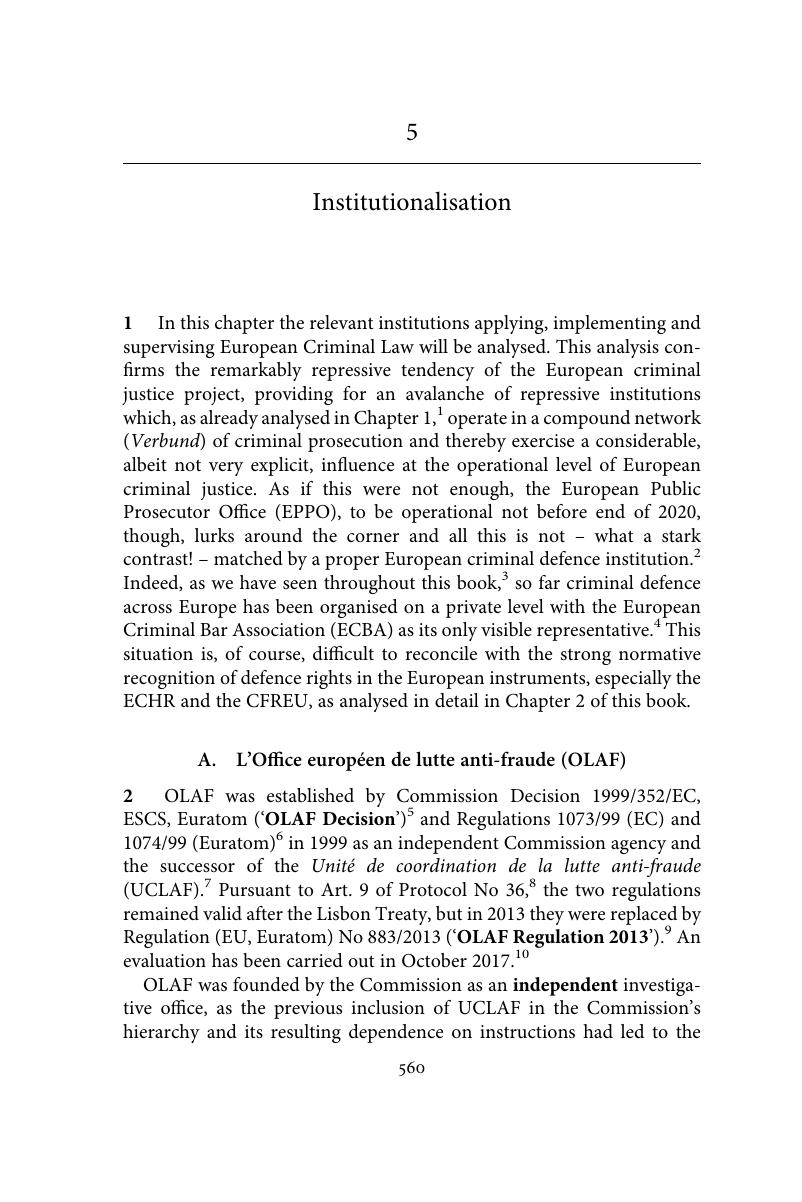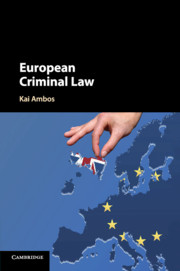Book contents
- European Criminal Law
- European Criminal Law
- Copyright page
- Dedication
- Contents
- Tables and Figures
- Preface
- Abbreviations
- Table of Cases
- 1 Foundations
- 2 The Protection of Fundamental Rights in Europe
- 3 Europeanised Substantive Criminal Law in the Broader Sense (Council of Europe and EU)
- 4 Procedural Law
- 5 Institutionalisation
- General Bibliography
- Index
- References
5 - Institutionalisation
Published online by Cambridge University Press: 02 June 2018
- European Criminal Law
- European Criminal Law
- Copyright page
- Dedication
- Contents
- Tables and Figures
- Preface
- Abbreviations
- Table of Cases
- 1 Foundations
- 2 The Protection of Fundamental Rights in Europe
- 3 Europeanised Substantive Criminal Law in the Broader Sense (Council of Europe and EU)
- 4 Procedural Law
- 5 Institutionalisation
- General Bibliography
- Index
- References
Summary

- Type
- Chapter
- Information
- European Criminal Law , pp. 560 - 616Publisher: Cambridge University PressPrint publication year: 2018



